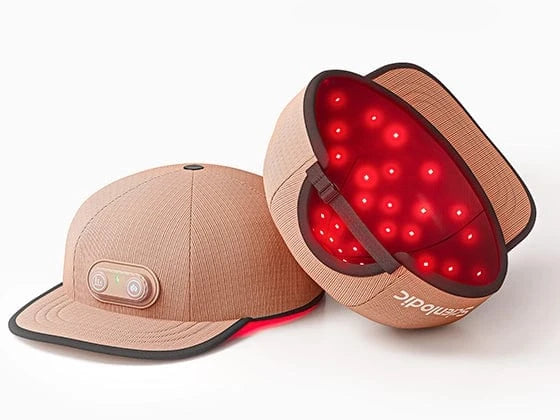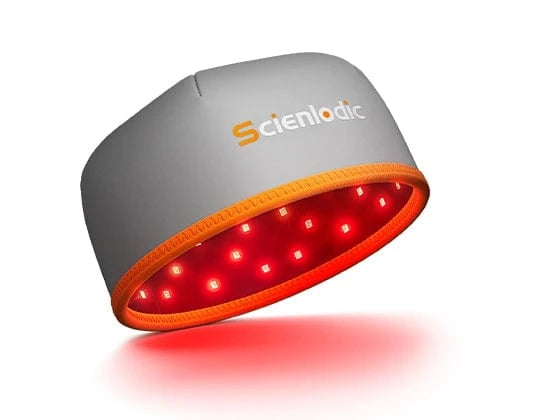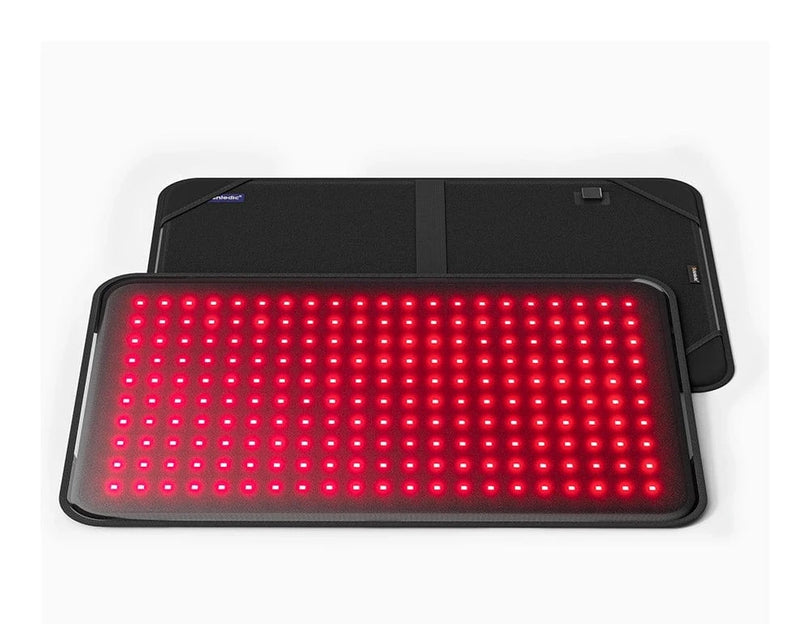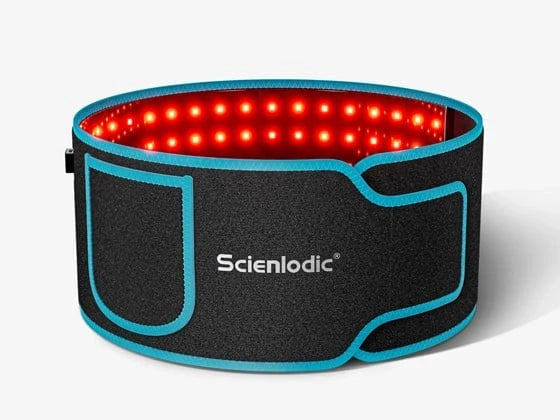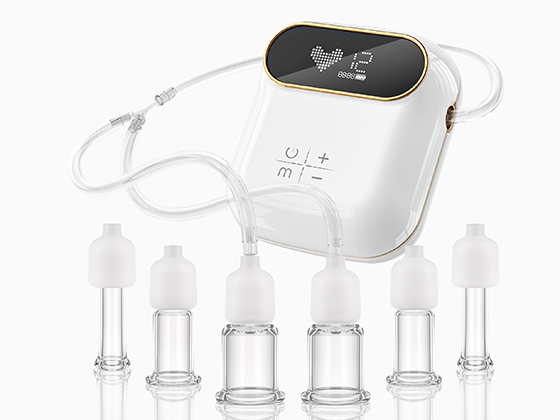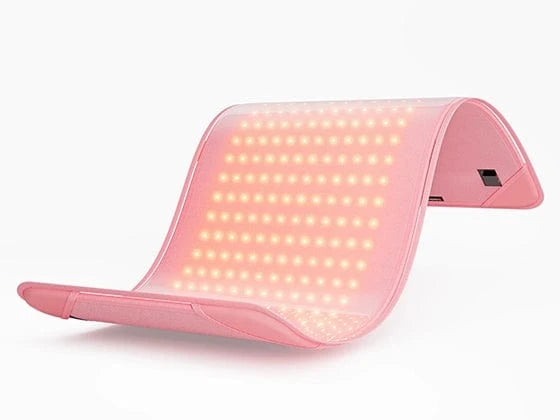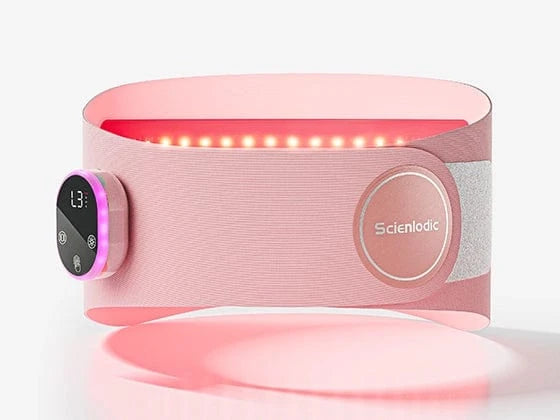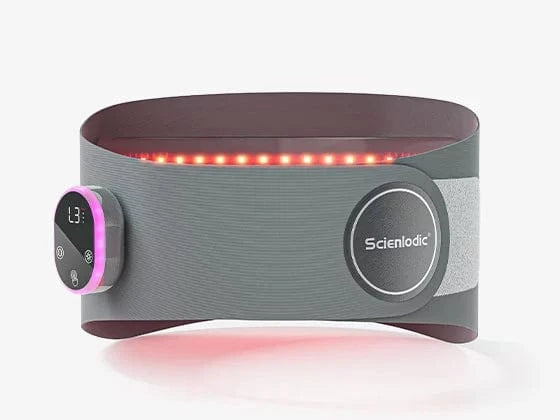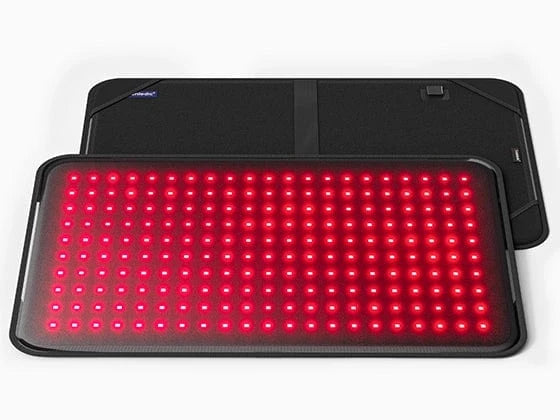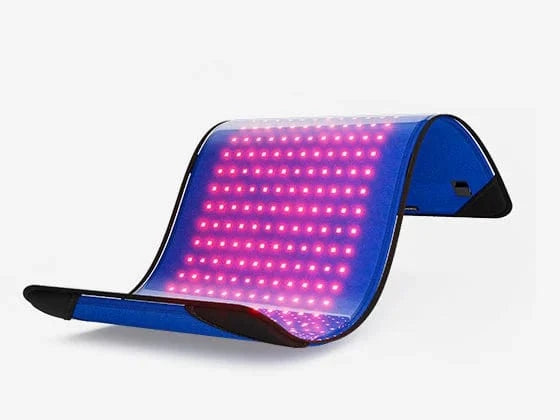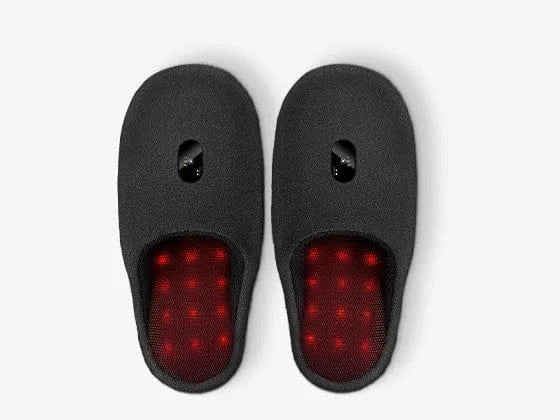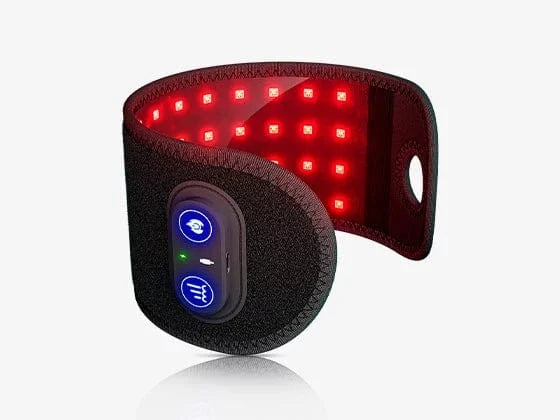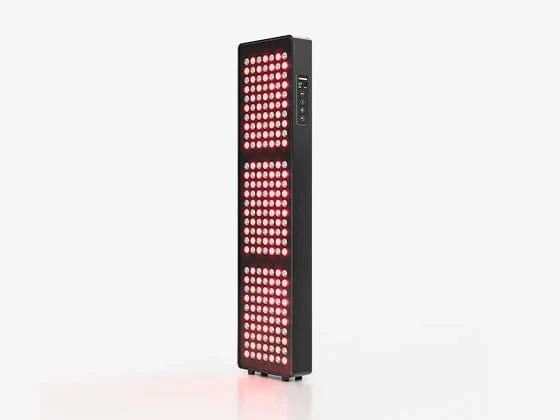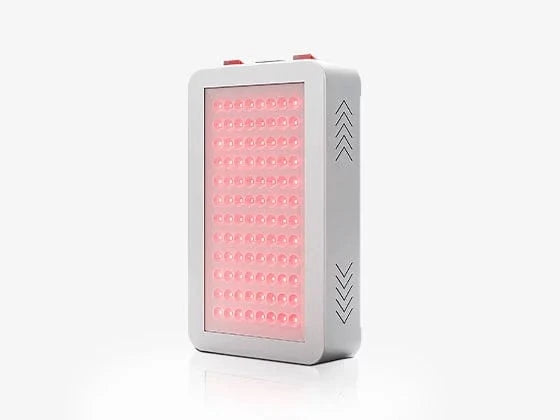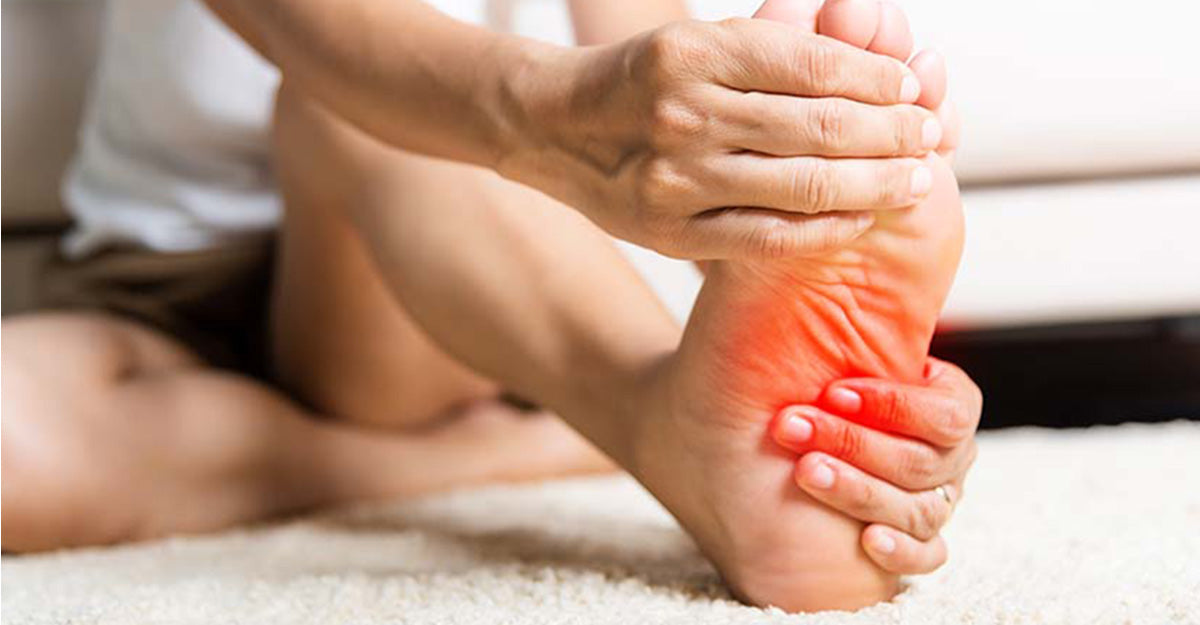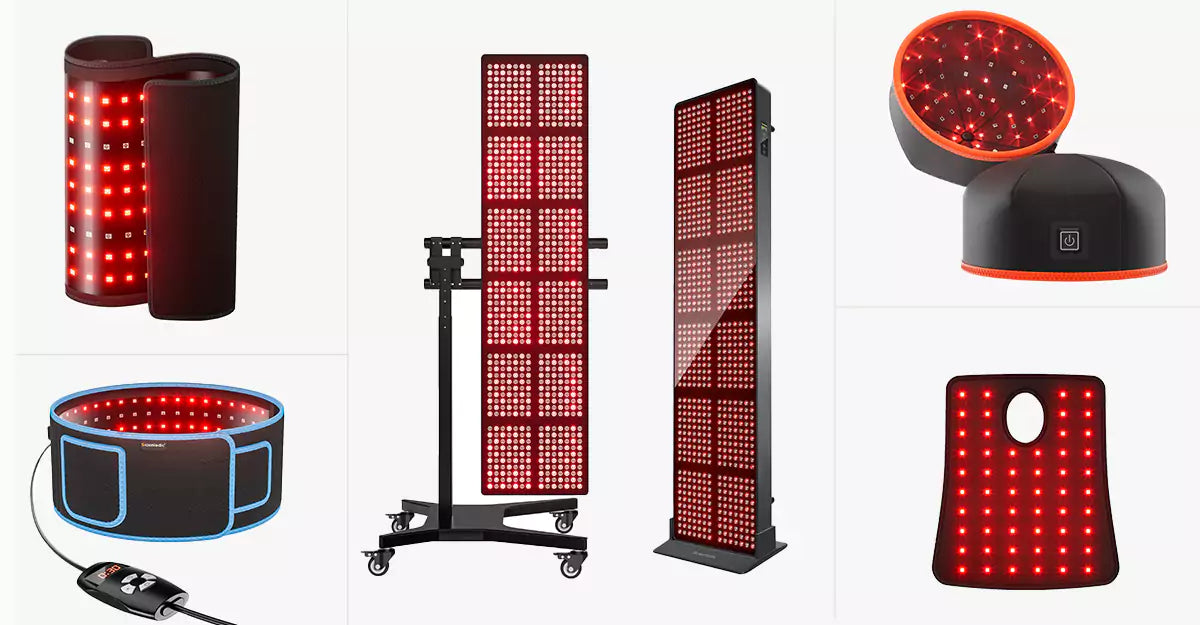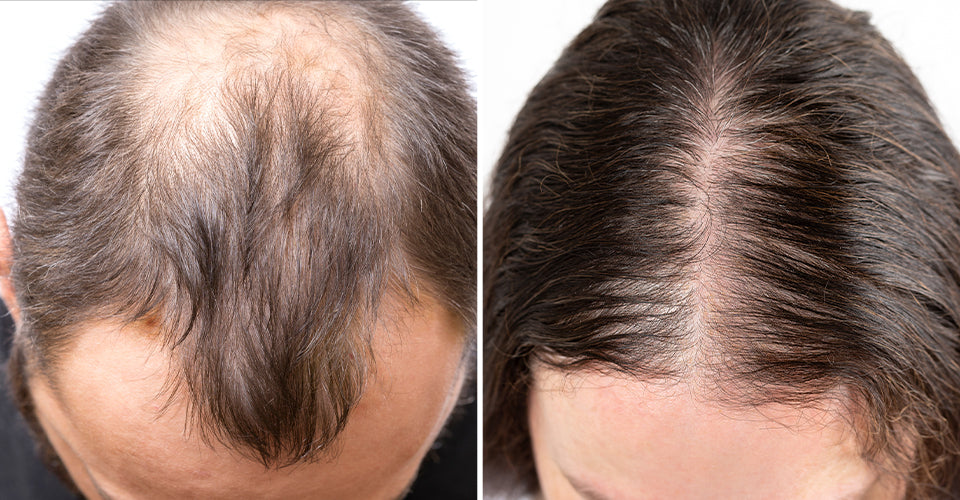Neuropathy is a medical condition that involves harm to the peripheral nervous system.
The peripheral nervous system is responsible for transmitting sensory information, such as temperature or pain, from the body to the central nervous system (CNS), as well as carrying signals from the CNS to the rest of the body.
The peripheral nervous system is like the command center of the body. When it experiences abnormalities, you may face various health problems.
There are approximately 20 million people in the United States who are believed to suffer from some form of peripheral neuropathy. The prevalence of peripheral neuropathy in the general population ranges from 1% to 7%, with higher rates among those older than 50 years.
Red light therapy for neuropathy is a new treatment.
It has features such as painlessness and non-invasiveness and can be used at home. Red light therapy achieves the dual purpose of relieving symptoms and curing diseases by reducing pain and inflammation and promoting nerve regeneration.
This may be the most comprehensive article you can find on the topic of red light therapy and neuropathy. To help you find the information you're looking for, we've prepared a table of contents. For beginners to red light therapy, we recommend reading the entire article to gain a comprehensive understanding.
Table of Contents
1. Basic Mechanism: How Red Light Therapy Works for Neuropathy2. Benefits of Red Light Therapy for Neuropathy
6. Reference
Let’s dive in!
Basic Mechanism: How Red Light Therapy Works for Neuropathy
Red light therapy is believed to be effective by influencing the "power plant" present in the cells of your body, which is referred to as mitochondria.
When cells have more energy, they are able to perform their functions with greater efficiency. This can lead to a reduction in pain, an increase in the growth of new cells, and an improvement in nerve regeneration.
A more professional way to say it is that "red light therapy is believed to function by stimulating specific cells to work through the absorption of light wavelengths." This process, known as "photobiomodulation," increases mitochondrial ATP production, cell signaling, and growth factor synthesis and reduces oxidative stress.
Simply put, red light and NIR can charge your cells. With more energy, your cells can do more, so don't underestimate the body's self-repair capabilities.

Through this underlying mechanism, red light therapy can help your cells regain vitality and recover faster. It can also help address surface problems, such as relieving unbearable pain, as well as root problems by accelerating nerve repair.
Relieve Symptoms of Neuropathy

Red light therapy has been proven to have outstanding pain relief and anti-inflammatory effects. It can help you get through painful nights that seem unbearable if you suffer from neuropathy.
Firstly, when red light is applied to the body, you can almost immediately feel relief from discomfort. Red light causes your blood vessels to dilate, increasing blood circulation and oxygen delivery, and promoting tissue repair and regeneration.
In addition, it stimulates the release of endorphins. Endorphins are natural neurotransmitters produced by the body that help relieve pain and stress. They can interact with the brain's opiate receptors, reducing pain perception and producing a magical sense of pleasure and happiness.
When the pain is relieved, you can be in a better state to continue with more treatments.
Accelerate Nerve Restoration

This is still a very cutting-edge discipline that requires more research and experimentation. However, we can see from the descriptions of scientists that red light therapy is the new favorite of neurology and psychiatry.
Research has shown that light therapy can improve neuronal metabolism by regulating mitochondrial function, intraneuronal signaling systems, and redox state.
In other words, if the nervous system is a boxer, light is like the coach who cares about you. It provides necessary replenishment to your nervous system midway through the game, while also helping you wipe sweat and massage so that you are in a better state to participate in the game.
With better metabolism in the nervous system, it can repair itself more quickly.
However, knowing the underlying mechanism is not enough. There is still an important question that needs to be answered: how does red light therapy help alleviate neuropathy? Can it help me?
Let's take a look at the latest clinical research results.
Benefits of Red Light Therapy for Neuropathy
Promote Nerve Regeneration

Your nervous system is involved in all bodily activities, from regulating breathing to controlling muscles and perceiving temperature. Therefore, nerve pain and damage can severely affect your quality of life.
Generally, a person's nerves can be divided into three types: autonomic nerves, motor nerves, and sensory nerves. The consequences of damage to different types of nerves are different.
Among them, autonomic nerves are responsible for controlling the body's most important functions, such as heart rate, blood pressure, breathing, etc. Damage to these nerves can be life-threatening. Motor nerves are affected, affecting your control over muscles and movement performance. When sensory nerves are damaged, you may not feel pain or feel pain that does not exist.
Fortunately, we also have red light therapy to help us.
In Japan, scientists conducted an experiment in April 2010 to investigate the effects of LED red light therapy on nerve regeneration. After rigorous testing, the research results were pleasing. 660nm of red light was proven to promote nerve regeneration and resist the adverse consequences of nerve damage.
Let's take a look at an updated study. In 2020, scholars Di Hu, Gila Moalem-Taylor, Jason R. Potas, and others conducted an experiment attempting to prove that red light therapy could significantly decrease the likelihood of neuronal cell death.
They tried to create mild spinal cord injuries in a batch of experimental mice, causing nerve damage. Then, they administered 30 minutes of 670nm red light therapy daily.
After 7 days, the experimental group showed a significant reduction in neuronal cell death compared to the control group that received no treatment.
Two experiments have shown that red light therapy can not only reduce the probability of nerve death and damage but also promote the regeneration of nerve cells.
Alleviate Postherpetic Neuralgia from Shingles

Sometimes when you have chickenpox or shingles, the varicella-zoster virus can come back later and cause post-herpetic neuralgia. It's the most common long-term problem caused by the virus.
This virus resides in the body for a long time, and prior to the introduction of vaccines in the late 1990s and early 21st century, over 90% of American adults tested positive for VZV antibodies. It is truly a staggering number.
Before the rash appears, it is common to experience pain, itching, or tingling in the area where the rash will occur.
This may happen a few days before the rash appears. Although the rash usually disappears completely within 2 to 4 weeks, enduring the pain can still be distressing. So, what should you do if you are facing this problem now?
Red light therapy is a great solution.
In a comparative study conducted in 2016, researcher Yu-Tsung Chen and colleagues found a pattern: early application of red light therapy can reduce the incidence of postherpetic neuralgia.
The researchers found and selected 250 shingles patients, and then divided them into three groups: the acute group, the subacute group, and the control group (no treatment was performed) based on the urgency of their condition and the necessity of the experiment.
After adjusting for confounding factors to make the experimental results more accurate, they found that the incidence of postherpetic neuralgia (PHN) in the acute group within one month after applying red light therapy was significantly lower than that in the control group.
It is important to note that there is currently no research to prove that red light therapy can fight viruses. However, on the other hand, red light therapy can lower the probability of postherpetic neuralgia (PHN) occurring, which can make you feel better.
Treat Diabetic Peripheral Neuropathy

Diabetic neuropathy is a condition where the nerves in the body are damaged due to high blood sugar levels. There are four main types of diabetic neuropathy, which can involve one or more types of nerve damage.
The most common type is called peripheral neuropathy.
This type of nerve damage is also known as distal symmetric peripheral neuropathy, which first affects the feet and legs and then the hands and arms.
If you are struggling with diabetic neuropathy, you may feel:
- Numbness or tingling sensation
- Sharp or burning sensation
- Severe pain or spasms
- Extreme sensitivity to touch - for some people, even the weight of a bedsheet can cause pain
There is evidence suggesting that low-level laser therapy or photobiomodulation may be effective for neurological disorders. As a supplementary explanation, red light therapy is also one type of low-level laser therapy (LLLT).
In 2022, to verify this, Jia-You Wang and other scholars organized a large systematic review and meta-analysis, searching for relevant experimental results in eight major medical databases, and rigorously selecting the most credible studies using extremely strict methods.
During the research process, they found several key elements:
- Non-pharmacological treatments such as low-level laser therapy have been used to treat diabetic peripheral neuropathy (DPN) due to their ability to relieve pain and improve lower limb sensation.
- LLLT has a strong anti-inflammatory effect on the peripheral nervous system and promotes functional recovery and regeneration of the peripheral nerve after injury.
- Commonly used light in the treatment of DPN includes red light (wavelength 780-1100nm) and near-infrared light (wavelength 780-1100nm).
- Limited evidence suggests that infrared light therapy can improve tactile sensitivity in the short term.
- A 2019 study concluded that LLLT has a positive effect on relieving neuropathic pain.
In conclusion, their judgment is that there is currently a lack of research and experimentation on red light therapy or LLLT for diabetic neuropathy, and it is not easy to draw conclusions. There are many positive experimental results, but there are also some experiments that have not yielded the expected results.
However, regardless of the circumstances, red light therapy has not shown any side effects or signs of worsening diabetic neuropathy. Therefore, even though red light therapy may not work for everyone, at least it won't make things worse.
Relieve Nerve Pain

Individuals with nerve pain may experience a variety of sensations.
Some may feel a stabbing pain that strikes in the middle of the night, while others may experience chronic tingling, stabbing, or burning sensations throughout the day.
Damage to the nerves can be compared to a fault in a telephone line. Under normal circumstances, information can be transmitted smoothly on the telephone line, but if there is a fault, the information will be interrupted or errors may occur.
Similarly, after nerve damage, there will be problems with the transmission of information, which can cause phantom pain or a lack of sensation of pain.
Many diseases, such as herpes zoster and diabetes mentioned above, may cause nerve damage and pain. So, besides combating this series of diseases, what other roles can red light therapy play?
Furthermore, can red light therapy help relieve sciatica or trigeminal neuralgia? Let's continue to explore cutting-edge research on red light therapy.
In 2018, researcher Robert Dima published an article in which he believed that red light therapy could significantly alleviate acute pain. By reducing the levels of biochemical markers and oxidative stress, as well as swelling and the formation of bleeding, pain can be relieved.
He mentioned that many studies have proven the analgesic and anti-inflammatory effects provided by photobiomodulation.
Another scholar, Miguel de Pedro, has also proposed similar and more detailed viewpoints.
He scanned 997 studies and extracted 13 that had significant reference values. Three of them provided data for the treatment of trigeminal neuralgia, one provided data for the treatment of occipital neuralgia, and ten provided data for the treatment of burning mouth syndrome.
All studies showed a decrease in pain intensity (mostly significant).
Although he also mentioned the need for more mid- and long-term studies to evaluate outcome measures for all chronic pain, it is evident that red light therapy has demonstrated outstanding short-term pain relief effects.
Using Red Light Therapy at Home to Promote Nerve Regeneration

Managing chronic nerve pain at home becomes more achievable with the application of Red Light Therapy as an effective and non-invasive pain management tool. These are the impartial aspects to take into account while practicing red light therapy at home:
- Seeking Professional Guidance for Home Red Light Therapy
Consult with a medical professional to understand your specific medical condition and determine whether Red Light Therapy is suitable for your individual needs.
Your healthcare provider can offer personalized guidance on the most appropriate treatment plan based on your medical history and the severity of your nerve-related condition.
They can also help you establish the optimal duration and frequency of your at-home Red Light Therapy sessions to ensure safe and effective results.
It is also essential to be aware of potential side effects and contraindications and to adhere to safety guidelines during therapy sessions.
- Integrating Red Light Therapy into Your Daily Routine:
To maximize the benefits of Red Light Therapy for nerve regeneration, consider developing a consistent treatment schedule.
Determine the appropriate time and duration for each session to achieve optimal results.
Additionally, explore the potential of combining Red Light Therapy with other supportive therapies at home to enhance its effectiveness in managing chronic nerve pain and promoting healing.
- Monitoring Progress and Adjusting Treatment:
Before starting the treatment, take photos of the affected area to observe how the skin improves as time progresses. This visual documentation allows you to assess the therapy's impact objectively.
Evaluating the effectiveness involves observing changes in pain levels, mobility, and overall well-being. Assess whether the therapy is providing the desired relief and promoting nerve regeneration.
Based on the results, be prepared to make necessary adjustments to the treatment plan. This may involve altering the frequency or duration of therapy sessions to better suit your individual needs and maximize the benefits of Red Light Therapy.
- Incorporating Lifestyle Changes for Enhanced Results:
Support nerve regeneration with complementary lifestyle adjustments, including nutrition, exercise, and relaxation techniques.
Embrace a holistic approach to overall well-being, enhancing the benefits of Red Light Therapy.
- Red Light Therapy: No Instant Miracles
Unrealistic expectations of immediate results in Red Light Therapy may lead to disappointment. Nerve regeneration and pain relief require time and persistence.
Consistent and patient use of Red Light Therapy, along with complementary approaches, maximizes its potential benefits. Stay committed for gradual but effective outcomes.
How to Use Red Light Therapy for Neuropathy to Get the Best Results
Due to differences in individual physiques, the effects of red light therapy vary from person to person. What we want to emphasize is that it is important to prioritize following the doctor's treatment plan. Red light therapy is an excellent complementary therapy, but it is not a miracle cure that works in a week.
Safety Precautions When Using Red Light Therapy for Neuropathy

Before attempting red light therapy, it is important to understand that not everyone is a suitable candidate for this treatment.
If you are photosensitive or taking photosensitive drugs, you must consult a doctor before trying. Since red light therapy has already been widely used in hospitals (if you have skin or pain conditions, you may have already tried it in the hospital), when you ask your doctor, he or she can always give you the most reliable answer.
Best Practices for Using Red Light Therapy for Neuropathy
If you have confirmed with your doctor that you can receive red light therapy, here are some treatment points to consider:
Start with a small dosage.
Using our Scienlodic neuropathy pain-relieving led wrap as an example, when you first receive the product, we recommend that you try red light therapy 3-5 times a week, each time lasting 10-15 minutes. Such short-term red light therapy may not immediately produce exciting results, but it can help your body adapt.
Do not stop your original treatment.
If you are a diabetic patient or have already started taking medication to relieve neuropathic pain, you can undergo red light therapy while taking medication with your doctor's permission.
Medications can take effect in a short period of time or help stabilize physiological indicators such as blood sugar. At the same time, red light therapy acts on cells and nerves, providing the energy needed for cell regeneration, which is a slow process.
Conclusion
In this article, we have elaborated on the principles, effectiveness, and usage of red light therapy for neuropathy.
Red light therapy is a painless and easy treatment that helps people with neuropathy.
It uses red and near-infrared light to make ATP, a molecule that gives energy to cells and helps to reduce pain, and swelling, and improve blood flow. All of these are important for relieving neuropathy symptoms.
Red light therapy can also help nerves grow and repair, which can improve neuropathy symptoms. It is a good treatment option for people with neuropathy because it has many benefits that can improve their life quality and reduce their need for other pain treatments.
With all of these potential benefits, it's no wonder that more and more people are turning to at-home red light therapy as a way to improve their overall well-being. So why not give it a try and see what red light therapy can do for you?
Reference
[1] https://www.ninds.nih.gov/health-information/disorders/peripheral-neuropathy
[2] Peripheral Neuropathy: Evaluation and Differential Diagnosis. GREGORY CASTELLI, PharmD, BCPS, BC-ADM, KRISHNA M. DESAI, MD, AND REBECCA E. CANTONE, MD
[3] Graeme Ewan Glass. Photobiomodulation: The Clinical Applications of Low-Level Light Therapy. Aesthet Surg J. 2021 May 18;41(6):723-738. doi: 10.1093/asj/sjab025.
[4] Julio C Rojas 1 2, F Gonzalez-Lima 1. Low-level light therapy of the eye and brain. Eye Brain. 2011 Oct 14;3:49-67. doi: 10.2147/EB.S21391. eCollection 2011.
[5] Motoi Ishiguro 1, Kazuo Ikeda, Katsuro Tomita. Effect of near-infrared light-emitting diodes on nerve regeneration. J Orthop Sci. 2010 Mar;15(2):233-9. doi: 10.1007/s00776-009-1438-4. Epub 2010 Apr 1.
[6] Di Hu 1, Gila Moalem-Taylor 2, Jason R Potas 1 2. Red-Light (670 nm) Therapy Reduces Mechanical Sensitivity and Neuronal Cell Death, and Alters Glial Responses after Spinal Cord Injury in Rats. J Neurotrauma. 2020 Nov 1;37(21):2244-2260. doi: 10.1089/neu.2020.7066. Epub 2020 Aug 10.
[7] Postherpetic Neuralgia. Charles Gruver; Kevin B. Guthmiller.
[8] Yu-Tsung Chen 1, Hsiao-Han Wang 2, Tsung-Jen Wang 3, Yu-Chuan Li 2, Ting-Jui Chen 4. Early application of low-level laser may reduce the incidence of postherpetic neuralgia (PHN). J Am Acad Dermatol. 2016 Sep;75(3):572-577.
[9] Jia-You Wang,#1. Low level light therapy/photobiomodulation for diabetic peripheral neuropathy: protocol of a systematic review and meta-analysis. BMJ Open. 2022; 12(9): e059476.
[10] Robert Dima, Vinicius Tieppo Francio, Chris Towery, Saied Davani. Review of Literature on Low-level Laser Therapy Benefits for Nonpharmacological Pain Control in Chronic Pain and Osteoarthritis. Altern Ther Health Med. 2018 Sep;24(5):8-10.
[11] Miguel de Pedro, Rosa María López-Pintor, José Luis de la Hoz-Aizpurua, Elisabeth Casañas, Gonzalo Hernández. Efficacy of Low-Level Laser Therapy for the Therapeutic Management of Neuropathic Orofacial Pain: A Systematic Review. J Oral Facial Pain Headache. 2020 Winter;34(1):13–30. doi: 10.11607/ofph.2310. Epub 2019 Jul 24.

